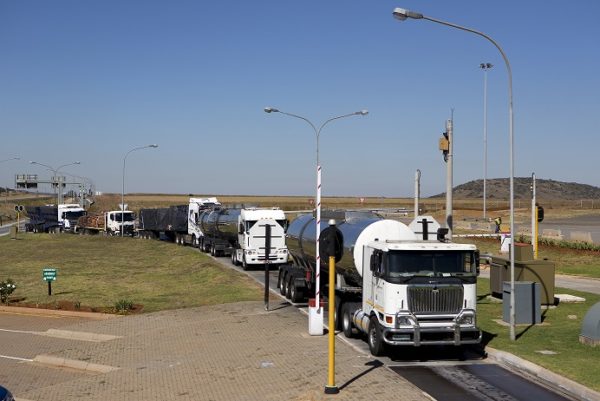Weigh-in-motion system will enable authorities to effectively monitor heavy vehicles and improve productivity.

Technology being introduced by the South African National Roads Agency (SOC) Limited (SANRAL) will revolutionise the way in which overloaded trucks are detected and result in more effective action taken against serial offenders.
Michelle van der Walt, Project Manager: Traffic Monitoring at SANRAL, said: “Overloaded vehicles are one of the contributing factors to road damage. This has an impact on the safety of road users and on SANRAL’s maintenance budgets.”
Overloaded trucks are also more likely to break down, resulting in traffic jams, delays and frustration for motorists.
Data collected while vehicle is in motion
The weigh-in-motion enforcement (WIM-E) technology enables road authorities to obtain accurate data on the weight of vehicles while they are travelling at normal speeds on the SANRAL network.
It will no longer be necessary for trucks to stop at traffic control centres or weigh bridges next to the road.
Some of the components of the WIM-E technology are already embedded in the freeway surfaces in the form of inductive loops with electronic equipment on the side.
Sensors accurately measure the weight of the vehicle and send the data through fibre networks or satellite technology to SANRAL’s headquarters in Pretoria or provincial control centres.
Integrating technologies
In future the WIM-E technology will be integrated with SANRAL’s average-speed-over-distance system, which consists of cameras placed at strategic locations throughout the network that are equipped with number plate recognition technology.
The system will be able to track the movement of overloaded vehicles during their entire journeys – including those vehicles that enter the country from neighbouring states.
Van der Walt said the system will also bring major benefits to provincial and local traffic authorities.
Dangerously overloaded trucks will no longer be able to evade physical weigh stations by diverting onto secondary roads, causing serious damage to roads that are not designed to sustain such loads.
Moreover, the WIM-E process will improve the productivity of law enforcement officials and cut down on risk of corruption that could occur at weighbridges.
One of the key issues currently being resolved is to ensure the WIM-E data generated will be sufficient to prosecute offenders.
This will require several changes to existing legislation – including the SANRAL Act – and regulations to bring them in line with the development in technology.
The WIM-E equipment will comply with the provisions of the Legal Metrology Act and be monitored by the National Regulator of Compulsory Specifications, the watchdog that keeps an eye on measurements and verifications.
In future, SANRAL will also work with prosecutors and magistrates to ensure a greater understanding of the WIM-E system and build confidence in the data that is generated.
A successful pilot project has already been run on the N3 in KwaZulu-Natal during which the system was tested and accepted by local prosecutors.
Van der Walt said: “The WIM-E system is another example of how modern technology that has been used with great success in other parts of the world can be used locally to improve the safety of road users.”

